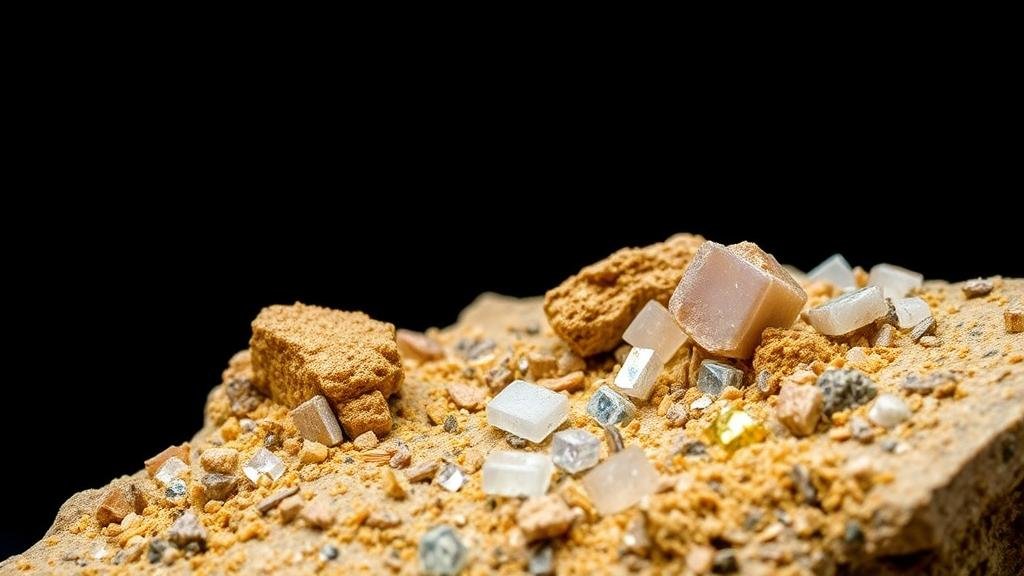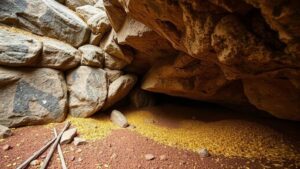How to Identify Heavy Minerals That Indicate Gold Deposits
How to Identify Heavy Minerals That Indicate Gold Deposits
Identifying heavy minerals that can signal the presence of gold deposits is a crucial aspect of mineral exploration and extraction. Heavy minerals, typically defined as those with a specific gravity greater than 2.9 g/cm³, include a variety of metallic and non-metallic minerals. Understanding how to recognize these can significantly enhance gold prospecting efforts.
Understanding Heavy Minerals
Heavy minerals comprise a small fraction of sediment but can provide valuable insights into geological processes. Common heavy minerals associated with gold deposits include:
- Zircon: Often accompanied by gold, zircon is a common indicator mineral found in sediment.
- Rutile: This mineral, owing to its high density, can also suggest nearby gold.
- Ilmenite: Found in many placer deposits, ilmenite can serve as a guide toward gold-rich areas.
Geological Setting and Context
It is essential to consider the geological setting when searching for heavy minerals. Typically, gold deposits are located in three main contexts:
- Placer Deposits: Formed by the weathering of rocks, these deposits occur in riverbeds and are often rich in both gold and associated heavy minerals.
- Vein Deposits: Found in hard rock, vein deposits are characterized by gold incorporated in quartz and other minerals.
- Disseminated Deposits: These deposits are spread throughout the host rock, often requiring more intensive mining techniques to extract.
Field Techniques for Identifying Heavy Minerals
When prospecting for gold, specific field techniques can help identify heavy minerals. These techniques include:
- Panning: This classical method involves placing sediment in a pan with water. lighter materials wash away, leaving heavier minerals, including potential gold.
- Magnetic Separators: Using magnets can help isolate magnetic heavy minerals, providing additional insights into the mineral composition of a sample.
- Concentration Tables: These can assist in sorting heavier minerals from lighter sediments effectively.
Laboratory Analysis of Samples
Once heavy minerals have been collected, laboratory analysis can further confirm their identity. Common methods used in mineral analysis include:
- Grain Size Analysis: Understanding the size distribution of sediments can help in geological interpretation.
- Scanning Electron Microscopy (SEM): This technique allows mineralogists to observe the morphology and composition of samples in detail.
- X-ray Diffraction (XRD): This helps in determining the crystalline structure of minerals present in the sample.
Case Studies Exemplifying Techniques
Several case studies illustrate the successful identification of heavy minerals indicating gold deposits:
- Klondike Gold Rush (Yukon, Canada): Here, prospectors applied panning techniques in placer deposits and identified significant concentrations of heavy minerals, leading to substantial gold discoveries.
- Goldfields of Western Australia: Advanced laboratory techniques, including XRD, were utilized to assess sediment samples, resulting in targeted drilling campaigns leading to large gold finds.
Addressing Potential Concerns
Prospectors often face concerns about the efficiency and accuracy of identifying heavy minerals. It is crucial to combine multiple methods both in the field and the laboratory for conclusive results. multifaceted approach mitigates the risk of overlooking gold deposits hidden within the surrounding minerals.
Actionable Takeaways
To enhance your gold prospecting efforts based on heavy mineral indicators, consider the following actionable steps:
- Conduct thorough field sampling using diverse techniques such as panning and magnetic separation.
- Use laboratory analysis to confirm the identity and concentration of heavy minerals.
- Stay informed about advancements in geological techniques to improve exploration methodology.
By applying these strategies and maintaining a vigilant eye for heavy minerals, prospectors can significantly improve their chances of discovering gold deposits.



